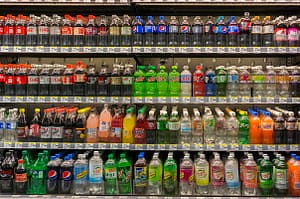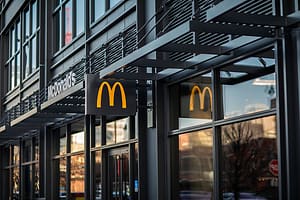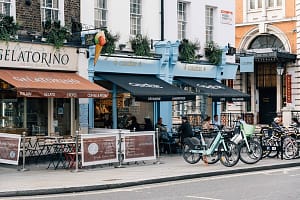Beer guru Pete Brown on why lager is no longer the lowest common denominator in beer
Back when I worked in advertising, I overheard many classic marketing conversations. My favourite was between my client, the brand manager for Stella Artois, and her opposite number for Carlsberg Export.
Back then, Stella was still considered premium and somewhat exotic, a beer you had to search out, even though it was the best-selling premium lager (lagers of 5% ABV or above.) The contemporary ‘wifebeater’ incarnation was unknown, a twinkle in the eye of someone yet to endure a hangover from hell.
The two brand managers were at an industry event and the Carlsberg person had done a speech proclaiming that their brand was the biggest in its sector. My client begged to disagree.
“Ah, no, because you’re in a different market segment from us. We’re the biggest in our segment,” said the Carlsberg person.
“What do you mean? Both brands are premium lagers. We’re in the same sector,” argued my client.
“No we’re not,” said the Carlsberg person. “Carlsberg is in the mainstream premium sector, while Stella is in the specialist premium sector.”
No one at Whitbread, who brewed Stella under licence in the UK at that time, nor anyone in their marketing agencies, nor any consumers we had ever spoken to in market research, recognised any such distinction between what Carlsberg referred to as ‘mainstream’ and ‘specialist’. But this hair-splitting meant Carlsberg could claim to be market leader in their press releases and trade press advertising.
Using similar logic, I might claim to be the best-selling author in my field anywhere in the world.
What, the world’s best-selling beer author? Really?
Well no, but if I define my field as humorous social history about British brewing and pubs with an element of travel writing thrown in, no one can touch me.
I doubt either Stella or Carlsberg would attempt to make such distinctions today. You’d have to have drunk an awful lot of corporate Kool-Aid to see any premium lager brewed under licence in the UK as anything other than a commoditised, devalued product. Years of deep discounting in supermarkets, seasoned by press scapegoating that blames ‘lager louts’ with ‘beer bellies’ for the problems caused by people getting mashed on cheap shooters, slammers and WKD Blue, have left beer – especially lager – with a chronic image problem.
‘Premium’ lager is premium only in its technical industry definition – lagers of 5% ABV or above – which is unfit for purpose because if we only used this standard, a revolting concoction such as Kestrel lager would be premium and Pilsner Urquell – the original golden pilsner and still of the finest lagers in the world – would not be.
Ten to 15 years ago, premium lager was at the centre of a typical bloke’s repertoire of drinks, and the leading brands enjoyed incredible loyalty and passion from their drinkers. It was the depth of this passion that first made me want to write about beer and the relationship we have with it.
Now, those same brands are bought mainly on deal and in bulk – why would you buy a pint in the pub when you can get exactly the same beer for a third of the price in a supermarket? The beer aisle has the lowest ‘dwell time’ of any part of the shop – there’s an acceptable bunch of brands, and the one on the best deal goes in the trolley.
The squeeze on margins means cuts have to be made. The name ‘lager’ derives from the German word ‘to store’, and lager beers by definition are matured and conditioned for long periods at cold temperatures. This is what gives them their smooth, light yet moreish character. It’s generally accepted that a good lager needs to mature for a month. Budweiser Budvar matures for 90 days. But of course, having your product tied up in large volume storage with expensive chilling costs money. That’s why many mainstream lager brands are fermented quicker at higher temperatures, hardly conditioned at all, and go from mashing to packaging and distribution in a week or even less. If you want to get really pedantic about it (as most beer writers do) technically, they are not lagers at all, but poorly made ales.
Back in the day, if a pub wanted to stay in business, it had to sell lager, and if it wanted to sell lager, it had to stock one of the leading, TV-advertised brands. People wouldn’t buy anything else. And this is why the plight of the big brands might actually turn out to be a good thing for both lager and lager drinkers.
Last month, both Fuller’s and Marston’s launched their own ‘craft lagers’ to compete with the big multinationals. Other regional ale breweries that either own their pubs or distribute to hundreds of free trade boozers have similar projects in the pipeline. The Fuller’s beer, named Frontier, is matured for 30 days and has a sprightly lager flavour – characterful enough to be interesting, light enough to deliver the crisp lager bite we yearn for at the end of a hot day.
Smaller craft brewers are getting in on the act too. Freedom Lager was perhaps ahead of its time when it launched in London in the 1990s, but with new owners and a new home near Burton-on-Trent, it’s producing lagers that hold their own against any legendary European brewery and win regular awards around the world.
Last year the Windsor & Eton Brewery created Republika, a collaboration project with a friendly Czech brewer that turned out so well they’ve just launched it on draught and are selling in to London pubs. Again, it enjoys a proper fermentation time, and tastes better as a result. Meantime in Greenwich have always made superior quality lagers after head brewer Alastair Hook learned his craft in German breweries. And Camden Town – now London’s third-largest brewery behind Fuller’s and Meantime after just three years – is struggling to keep up with demand for lagers like Camden Hells, which won its class hands down in the recent International Brewing Awards.
When I tell people I write about beer, they often say something like, “Oh, you won’t like me then, I just drink lager, not beer.” But lager is beer. And like any other beer style, the very best lagers are some of the finest drinks in the world.
Britain has had a long history of considering lager the lowest common denominator in beer, something that even with our fine brewing tradition we can’t do well, almost as if we don’t deserve the good stuff – if we want that, it has to be imported. Now, as part of a craft beer revolution that’s broader and more inclusive than anything we’ve ever seen before, while ‘foreign’ mainstream brands brewed in the UK are languishing, British brewers are making lagers every bit as good as their ales.
Pete Brown is the author of the newly published Shakespeare’s Local, an amusing romp through six centuries of history through the George Inn near London Bridge, watering hole to Chaucer, Dickens and the Swan of Avon. It is currently Radio 4’s book of the week.
Pete is also celebrating being crowned Beer Writer of the Year for a second time.
You need to read…
Brown’s beer: Why expensive beers are way better than pricey wines
Brown’s beer: Why cider is the world’s most misunderstood drink – part one
Brown’s beer: Why I don’t subscribe to anti-alcohol hysteria this January
< /div>
- Follow us @LondonlovesBiz
- Try our free newsletter
- The LondonlovesTalent Awards: ENTRIES NOW OPE






Leave a Comment